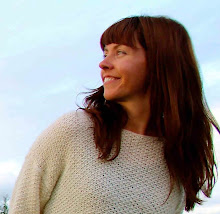Here is the video (taken from the website at: fredrikrysjedal.no):
Rysjedal’s talk specially focused on the principle of modulation and animation as well as the powerful combination of analogue and digital visual expressions. Analogue influences the spectators experience and attention to each part of the comic.
Modulation and animation
He explained four types of modulation:
- Primary motions
- Secondary motions
- Moment sequence
- Three dimensional motions
The Readable image stream is when images are overlapped like slides in a slide show. In the grid we can make the panel move around so you do not care about reading direction. Then he suggested that it will be order of appearance rather than left – right (reading direction) that is crucial; the panel you haven’t read is the future and the picture you have read is the past. With this approach, present involves everything on the screen needing to be ‘right now’ as in a film. All of the details in the story need to be covered but these details all have to work together with (be captured in) what is happening now. This is related to the approach we use in the picture book with each page on the screen reflecting what is happening in the present moment. The future is the next pages of the book that we cannot currently see.
The Playing image stream involves a film montage (i.e., a montage of the different scenes) and animations are also included. There are a number of different types of animation. The animation can be used to focus individuals attention to where you would like them to be looking at that moment, and to indicate what is important. Use of the playing image stream with animations is actually an old tradition that has taken more than 100 years to develop. Hand drawn animation, rotoscoping, sand animation, transition animation and loops are some example. Also time laps animation such as e.g reading while drawing may be seen as personal involvements that open up the painting process for the reader.
What is happening between the animations was also exemplified. Tween, which means two images and pauses in between two pictures were shown to be effective visual features to make the movement appear smooth. This could be used to e.g. to make a movement look slower or quicker, or to reflect the change from night to day.
 |
| An example image from the Comic Rex, taken from the website at: http://www.fredrikrysjedal.no/tales-from-outer-sogn |
The Comic REX is a nice example of how to use simple style, e.g., large areas of full colour such as the grass and sky, but then he chooses some detailed elements that make the pictures interesting, such as the bottle in the grass. He is also using great contrast in colours and light. There is plenty of room for open space so that the picture is not overwhelming.
Reading control and motion
Rysjedal underlined the importance to consider the interactivity when reading the comic. When:
- The spectator only receives info as it appears, and has no control of how it appears (e.g., pace).
- Transition animation gives the opportunity to read the comic how you would like, but the animation takes over the control.
- The spectator has full control over how they are receiving the images. Also different types of activation and stop of animation should be considered.
 |
| (Foto: Per Ola Juusola), from the left: Kari-Anne, Ingrid, Liz, Lovise and Fredrik |
Fredrik Rysjedal is going to publish his PhD thesis at researchcatalogue.net in January 2016. We wish him good luck with his finalization.
-Kari-Anne, Liz, Ingrid and Lovise -







Ingen kommentarer:
Legg inn en kommentar